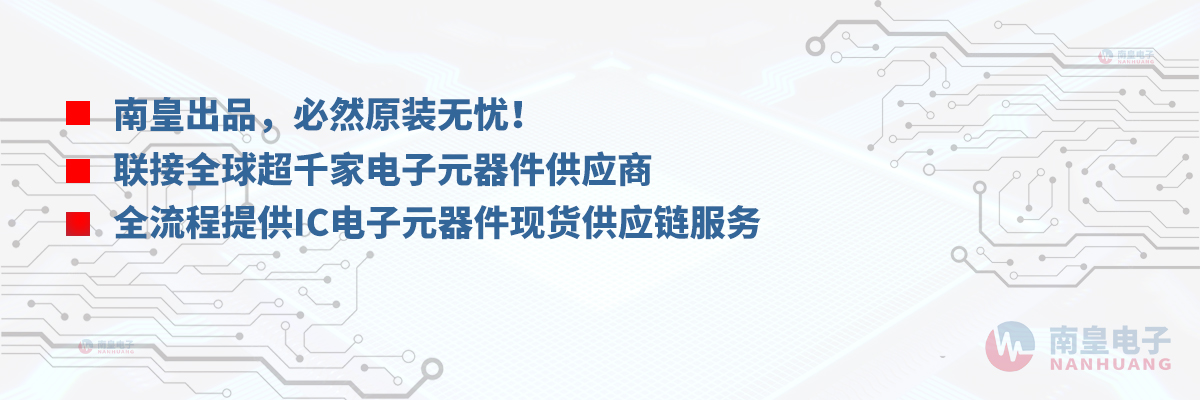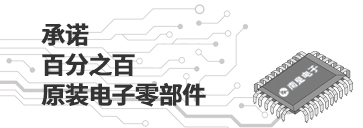

CDC2582是TI公司的一款无产品,CDC2582是具有 LVPECL 输入和 12 个 LVTTL 输出的 3.3V PLL 时钟驱动器,本页介绍了CDC2582的产品说明、应用、特性等,并给出了与CDC2582相关的TI元器件型号供参考。
CDC2582 - 具有 LVPECL 输入和 12 个 LVTTL 输出的 3.3V PLL 时钟驱动器 - 无 - 零延迟缓冲器 - TI公司(Texas Instruments,德州仪器)
The CDC2582 is a high-performance, low-skew, low-jitter clock driver. It uses a phase-lock loop (PLL) to precisely align the frequency and phase of the clock output signals to the differential LVPECL clock (CLKIN, ) input signals. It is specifically designed to operate at speeds from 50 MHz to 100 MHz or down to 25 MHz on outputs configured as half-frequency outputs. Each output has an internal 26- series resistor that improves the signal integrity at the load. The CDC2582 operates at 3.3-V VCC.
The feedback input (FBIN) synchronizes the frequency of the output clocks with the input clock (CLKIN, ) signals. One of the twelve output clocks must be fed back to FBIN for the PLL to maintain synchronization between the differential CLKIN and inputs and the outputs. The output used as feedback is synchronized to the same frequency as the clock (CLKIN and ) inputs.
The Y outputs can be configured to switch in phase and at the same frequency as differential clock inputs (CLKIN and ). Select (SEL1, SEL0) inputs configure up to nine Y outputs, in banks of three, to operate at one-half or double the differential clock input frequency, depending upon the feedback configuration (see Tables 1 and 2). All output signal duty cycles are adjusted to 50% independent of the duty cycle at the input clocks.
Output-enable () is provided for output control. When is high, the outputs are in the low state. When is low, the outputs are active. is negative-edge triggered and can be used to reset the outputs operating at half frequency. TEST is used for factory testing of the device and can be used to bypass the PLL. TEST should be strapped to GND for normal operation.
Unlike many products containing a PLL, the CDC2582 does not require external RC networks. The loop filter for the PLL is included on chip, minimizing component count, board space, and cost.
Because it is based on PLL circuitry, the CDC2582 requires a stabilization time to achieve phase lock of the feedback signal to the reference signal. This stabilization time is required following power up and application of a fixed-frequency, fixed-phase signal at CLKIN and , as well as following any changes to the PLL reference or feedback signal. Such changes occur upon change of SEL1 and SEL0, enabling the PLL via TEST, and upon enable of all outputs via .
The CDC2582 is characterized for operation from 0°C to 70°C.
detailed description of output configurationsThe voltage-controlled oscillator (VCO) used in the CDC2582 has a frequency range of 100 MHz to 200 MHz, twice the operating frequency range of the CDC2582 outputs. The output of the VCO is divided by 2 and by 4 to provide reference frequencies with a 50% duty cycle of one-half and one-fourth the VCO frequency. SEL0 and SEL1 determine which of the two signals are buffered to each bank of device outputs.
One device output must be externally wired to FBIN to complete the PLL. The VCO operates such that the frequency of this output matches that of the CLKIN/ signals. In the case that a VCO/2 output is wired to FBIN, the VCO must operate at twice the CLKIN/frequency, resulting in device outputs that operate at the same or one-half the CLKIN/ frequency. If a VCO/4 output is wired to FBIN, the device outputs operate at the same or twice the CLKIN/frequency.
output configuration AOutput configuration A is valid when any output configured as a 1× frequency output in Table 1 is fed back to FBIN. The frequency range for the differential clock input is 50 MHz to 100 MHz when using output configuration A. Outputs configured as 1/2× outputs operate at half the input clock frequency, while outputs configured as 1× outputs operate at the same frequency as the differential clock input.
NOTE: n = 1, 2, 3
output configuration BOutput configuration B is valid when any output configured as a 1× frequency output in Table 2 is fed back to FBIN. The frequency range for the differential clock inputs is 25 MHz to 50 MHz when using output configuration B. Outputs configured as 1× outputs operate at the input clock frequency, while outputs configured as 2× outputs operate at double the frequency of the differential clock inputs.
NOTE: n = 1, 2, 3
- Low Output Skew for Clock-Distribution and Clock-Generation Applications
- Operates at 3.3-V VCC
- Distributes Differential LVPECL Clock Inputs to 12 TTL-Compatible Outputs
- Two Select Inputs Configure Up to Nine Outputs to Operate at One-Half or Double the Input Frequency
- No External RC Network Required
- External Feedback Input (FBIN) Is Used to Synchronize the Outputs With the Clock Inputs
- Application for Synchronous DRAMs
- Outputs Have Internal 26- Series Resistors to Dampen Transmission-Line Effects
- State-of-the-Art EPIC-IIBTM BiCMOS Design Significantly Reduces Power Dissipation
- Distributed VCC and Ground Pins Reduce Switching Noise
- Packaged in 52-Pin Quad Flatpack
EPIC-IIB is a trademark of Texas Instruments Incorporated.






